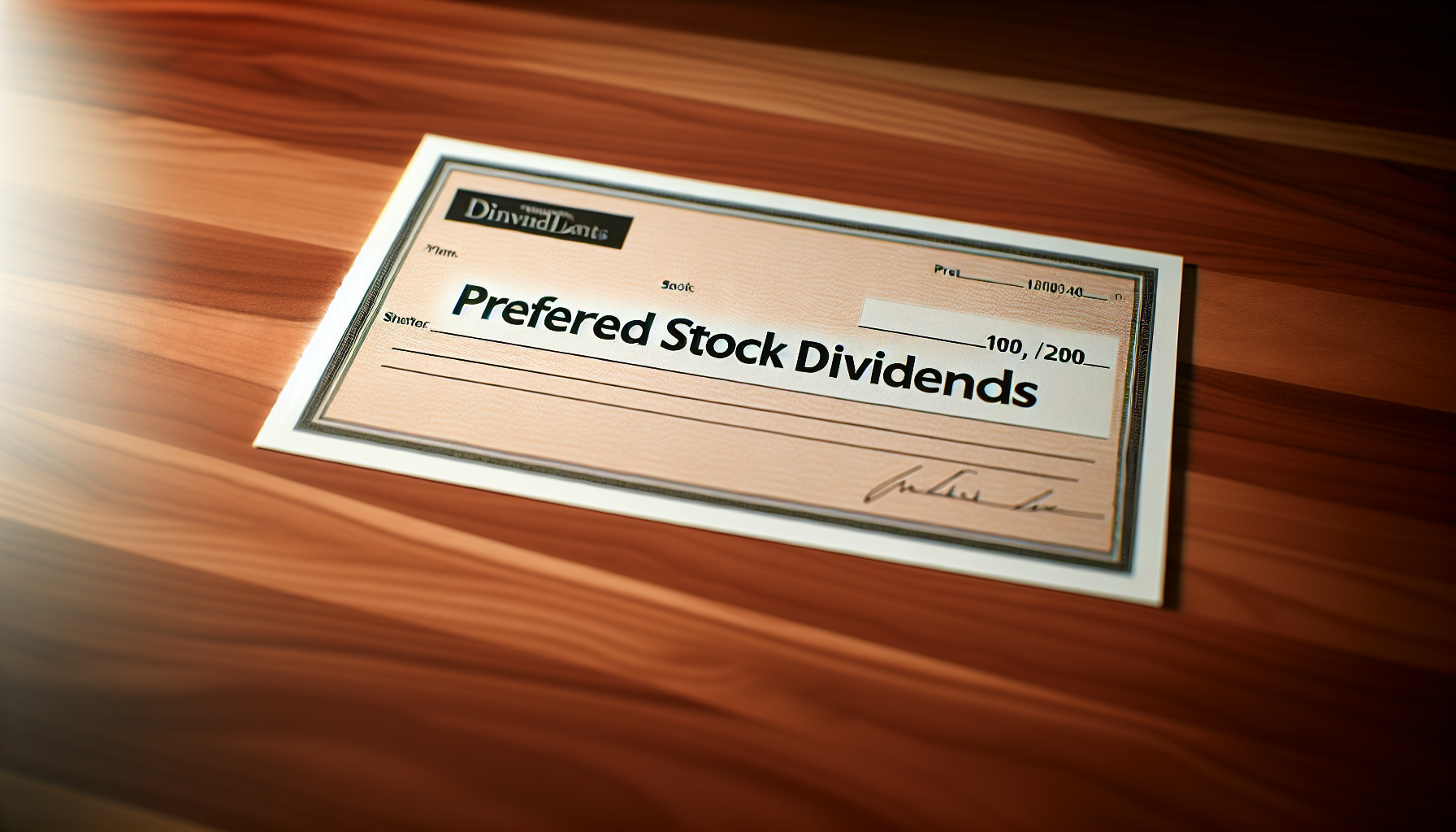Short Answer: Preferred stock offers fixed dividends and priority in asset claims and other preferred rights, suiting investors that need a liquidation priority. Common stock provides potential for higher growth and voting rights but comes with greater risk, ideal for long-term growth-focused investors
Stepping into the world of investing can feel like venturing into a labyrinth, especially when it comes to understanding the differences between preferred stock vs common stock. But fear not! This guide is your compass, helping you navigate through the maze of investing with confidence.
Key Takeaways
- Investors must understand the differences between preferred and common stocks in order to choose the best option for their investment goals.
- Preferred stock offers a fixed rate of income with priority status, while common stock provides higher potential for growth but carries greater risk.
- Retail investors should consider financial goals, risk tolerance and investment horizon when investing in both types of stocks.
Understanding Preferred and Common Stock

Imagine standing at a crossroads, with two paths before you. On one side, you have preferred stocks, akin to bonds, offering a predetermined dividend, and redemption price. On the other side, you have common stocks, enticing with potential dividends and a greater risk-reward balance. Now, which path do you choose?
As an investor, your decision should rest on the understanding of the nature of these stocks. Preferred stocks, like the steady tortoise from Aesop’s fables, promise safety and consistent, albeit limited, returns. They offer greater fixed income payments and a reduced risk of investment. However, the catch lies in their limitation on the potential appreciation due to their call feature and the lack of voting rights.
On the other hand, common stocks are akin to the hare, offering the potential for high-speed growth. They offer the excitement of ownership, voting rights, and potential for growth. But, just like the hare, they come with their share of risks, including a lower priority in dividends and asset claims.
Definition of Preferred Stock
Visualize preferred stocks as privileged attendees at a corporate event. They enjoy a higher priority in terms of dividends and asset claims than common stock, yet lack the power of voting rights. In the event of insolvency, they stand behind debt holders in the queue for claiming the company’s assets.
Preferred shares possess the potential to appreciate in value over time, but not to the same degree as their counterparts, the common shares.
Definition of Common Stock
Common stocks, however, resemble the shareholders who have a stake in the corporate event. They are shares of ownership in a business that confer voting rights to investors. Both common stock and common stocks offer shareholders the potential to appreciate in value over time should the business be successful.
Their major attraction lies in their potential for long-term growth.
Decoding the Dividend Difference

Let’s now examine the concept of dividends. Consider dividends as the return on your investment. Preferred stock dividends are established and take precedence over common stock dividends. It’s like the first pick of the ripest fruit. On the other hand, common stock dividends are not guaranteed and are contingent on company performance. They’re the fruits that ripen later, but can potentially be more bountiful.
Those with immediate financial needs may lean towards owning preferred stock for its steady dividend income. It’s like having a tree that bears fruit all year round. Investors should correlate the dividends they expect to receive with the share price. This is akin to evaluating whether the fruits of the tree are worth the price of the seedling.
Cumulative preferred stock has a particular feature – if dividend payments are unpaid, they accumulate as “dividends in arrears”. These must be paid before any dividends can be given to the common stockholders. It’s like a promise that even if the tree doesn’t bear fruit this season, it will make up for it in the next.
Preferred Stock Dividends
Preferred stock dividends resemble a constant flow at a fixed rate, disbursed before any dividends allotted to common stockholders. These dividends are usually calculated as a fixed percentage of the stock’s par value, providing a consistent income for preferred stockholders. However, if a company fails to generate profits, it is possible that these dividends will not be distributed to shareholders.
Common Stock Dividends
Conversely, common stock dividends resemble a river with fluctuating tides. The dividend rate is determined by the company’s board of directors, and the dividends are not mandatory. When a company performs admirably and generates higher earnings, it may be more likely to augment its dividend payments to shareholders.
However, dividends may still increase even in years when earnings diminish, albeit at a lower rate.
Analyzing Shareholder Privileges

Imagine being part of a company’s decision-making process, having a say in who gets to be on the company’s board of directors, or having a higher claim on the company’s earnings. This is what shareholder privileges can offer. However, these privileges vary between common and preferred shareholders.
Common shareholders possess the right to vote, akin to having a voice in the company’s decision-making process. They also have several other privileges, apart from voting rights, such as limited liability, preemptive rights, dividend rights, information rights, and liquidation rights. On the other hand, preferred shareholders usually possess limited or no voting rights.
Voting Rights with Common Stocks
Investors holding common stock have rights similar to citizens in a democracy. They can vote on the company’s board of directors and ratify major corporate decisions, such as mergers. Their votes can define the company’s strategic direction and governance policies.
This is analogous to citizens voting in an election, having a say in the direction their country takes.
Liquidation and Asset Claims
Preferred stockholders, also known as preferred stock owners, are like creditors in a company. They have a higher claim on a company’s assets during liquidation, standing in line before common stockholders but behind debt holders.
In the event of bankruptcy or liquidation, preferred stockholders are more likely to receive their dividend payments before common stockholders.
Risk and Return: Weighing Your Options

Investing in stocks resembles a chess game, where each move involves a meticulous evaluation of risk and return. Preferred stocks present a higher degree of risk, yet tend to offer lower potential returns. Conversely, common stocks generally provide higher potential returns, yet come with more volatility. It’s a delicate balance, where each investor must weigh their options based on their individual risk tolerance and investment goals.
The Risk Profile of Preferred Stock
Preferred stock is considered to be less risky due to its fixed dividends and priority status, however, it has limited growth potential. It’s like investing in a well-established company that provides a steady return but has limited room for growth.
The Growth Potential of Common Stock
On the other hand, common stock offers a heightened growth potential, albeit with an increased level of risk. It’s like investing in a start-up, where you have the potential for high returns, but the risk is also higher.
Investment Strategies: When to Choose Which
Selecting between preferred or common stocks is akin to choosing between two distinctive paths, each with its own set of challenges and benefits. Your choice will depend on your long-term financial and investment objectives, as well as your risk tolerance.
When Preferred Stock Fits Your Portfolio
Preferred stock may be appropriate for investors who are looking to secure a consistent income and protect their capital. It’s like choosing a safe and steady path, where you know exactly what to expect.
When Common Stock is the Right Choice
On the other hand, common stock is typically a suitable choice for those looking to achieve capital appreciation over the long-term. It’s like choosing a path filled with potential treasures, but also hidden pitfalls. In this context, understanding the differences between common stock vs other investment options is crucial for investors.
Navigating Convertibility and Call Features

Convertible and call features introduce more complexity to preferred stock investments. Consider them as extra tools in your investment arsenal, each with a unique function.
Convertible Preferred Stock
Convertible preferred stock is like having a magic wand that can turn one type of asset into another. It’s a hybrid investment security that combines the fixed-income characteristics of preferred stock with the option to convert it into shares of common stock.
Understanding Call Dates and Redemption Value
On the other hand, call dates and redemption values are like a ticking clock, reminding you of the time when the issuer can repurchase the stock and retire it. They impact the potential returns of preferred stocks and can affect your overall investment strategy.
The Impact of Market Fluctuations
Market fluctuations can misdirect your investment strategy, much like winds can steer a ship off its course. Both preferred and common stocks are impacted by market fluctuations. Here are some key points to consider:
- Preferred stocks are more responsive to changes in interest rates.
- When interest rates increase, the value of preferred stocks tends to decrease.
- When interest rates decrease, the value of preferred stocks tends to increase.
It is important to keep these factors in mind when making investment decisions.
On the other hand, when the market is highly volatile, the price of common stocks tends to be more volatile as well.
Strategic Considerations for Retail Investors
Investing in stocks doesn’t follow a uniform approach. It requires a tailored strategy that takes into account various factors such as:
- Income generation
- Risk and return
- Callable features
- Market conditions
Retail investors need to consider their long-term financial goals, risk tolerance, and investment horizon when choosing between preferred and common stocks.
It’s like choosing the right outfit for an occasion – you need to consider the weather, the type of event, and your personal style.
Corporate Finance: Why Companies Issue Different Stocks
Companies issue a variety of stocks for diverse reasons. For instance, they might issue preferred and common stocks to raise capital, regulate ownership structure, and accommodate various investor inclinations. Retail investors can acquire preferred or common stock through a broker. In an Initial Public Offering (IPO), an underwriting investment bank assists a company in determining the type and price of the stock.
Some companies, like Alphabet, the parent company of Google, even have distinct classes of common stock.
The Role of Stock Exchanges in Trading Equity
Stock exchanges have a central role in equity trading. They act as a marketplace, allowing investors to buy and sell shares of preferred and common stocks. The largest exchanges for trading preferred and common stock are the New York Stock Exchange (NYSE) and the Nasdaq.
These exchanges provide a platform for investors and traders to purchase and sell preferred and common stocks, promoting liquidity and price discovery.
Summary
To sum up, investing in preferred or common stocks is like embarking on a journey, with each path offering its own unique set of challenges and rewards. While preferred stocks offer stability and consistent returns, common stocks offer the potential for high returns but come with greater risk. The choice between the two depends on individual investor goals, risk tolerance, and investment horizon.
Frequently Asked Questions
Which is better preferred or common stock?
Preferred stock is generally seen as the safer, lower-risk option, offering priority over a company’s income and secure payment of dividends before common shareholders. This means that preferred stock is senior to common stock and provides a more secure investment for investors seeking income and fewer risks of losses.
Why would a company issue preferred shares instead of common shares?
Companies often issue preferred shares instead of common shares as a way to obtain equity financing without sacrificing voting rights or diluting ownership. Preferred stocks also provide investors with a relatively stable investment and higher priority in bankruptcy proceedings compared to common stocks.
How are dividends calculated for preferred and common stocks?
Preferred stock dividends are generally fixed percentages of the stock’s par value, while common stock dividends are determined by the company’s board of directors.
What are the voting rights of common and preferred shareholders?
Common shareholders possess the right to vote on the board of directors and ratify major corporate decisions, while preferred shareholders typically have limited or no voting rights.
What is the purpose of stock exchanges in trading equity?
The purpose of stock exchanges in trading equity is to provide a secure, regulated environment for buyers and sellers to exchange stocks and securities.


